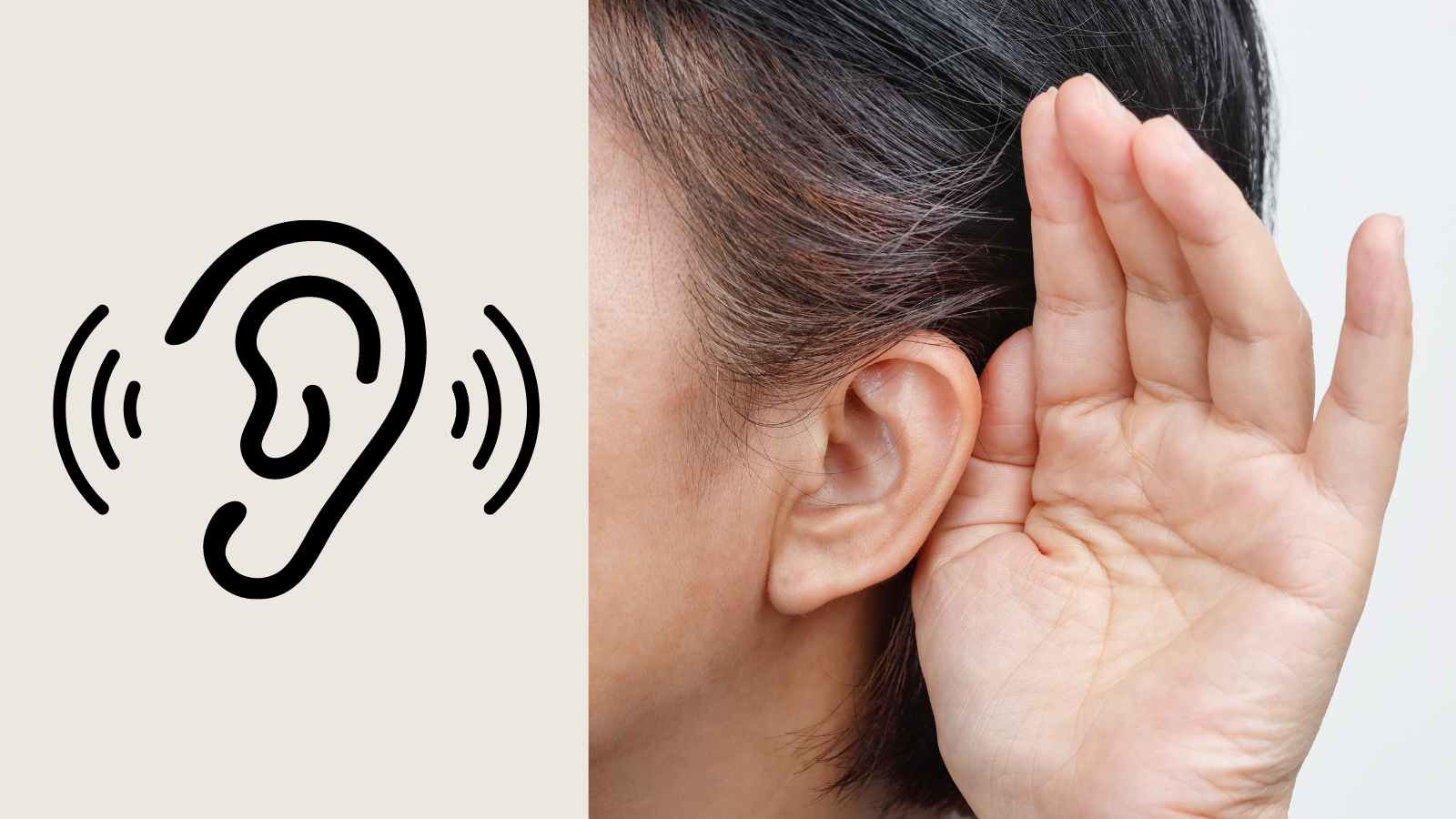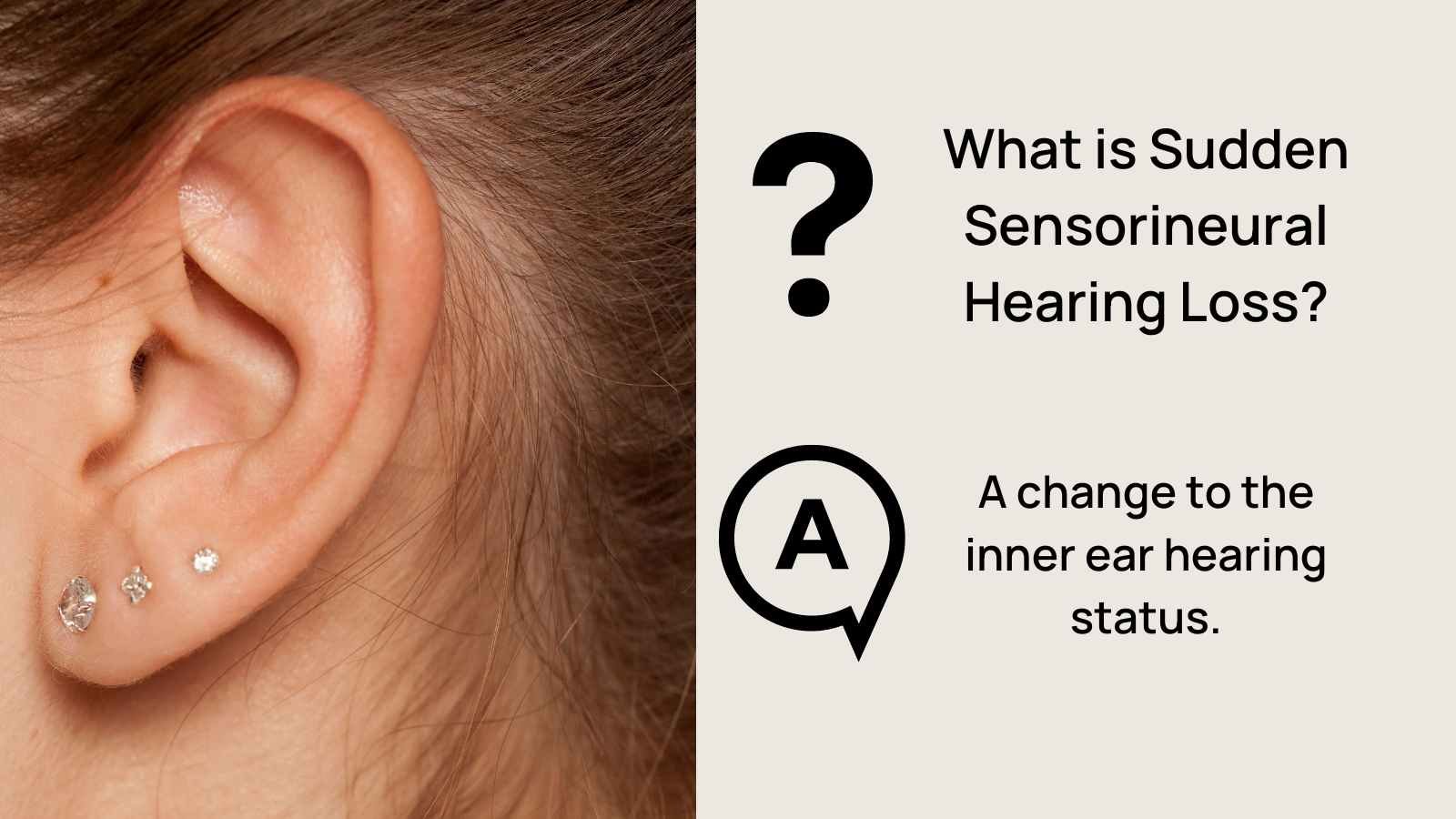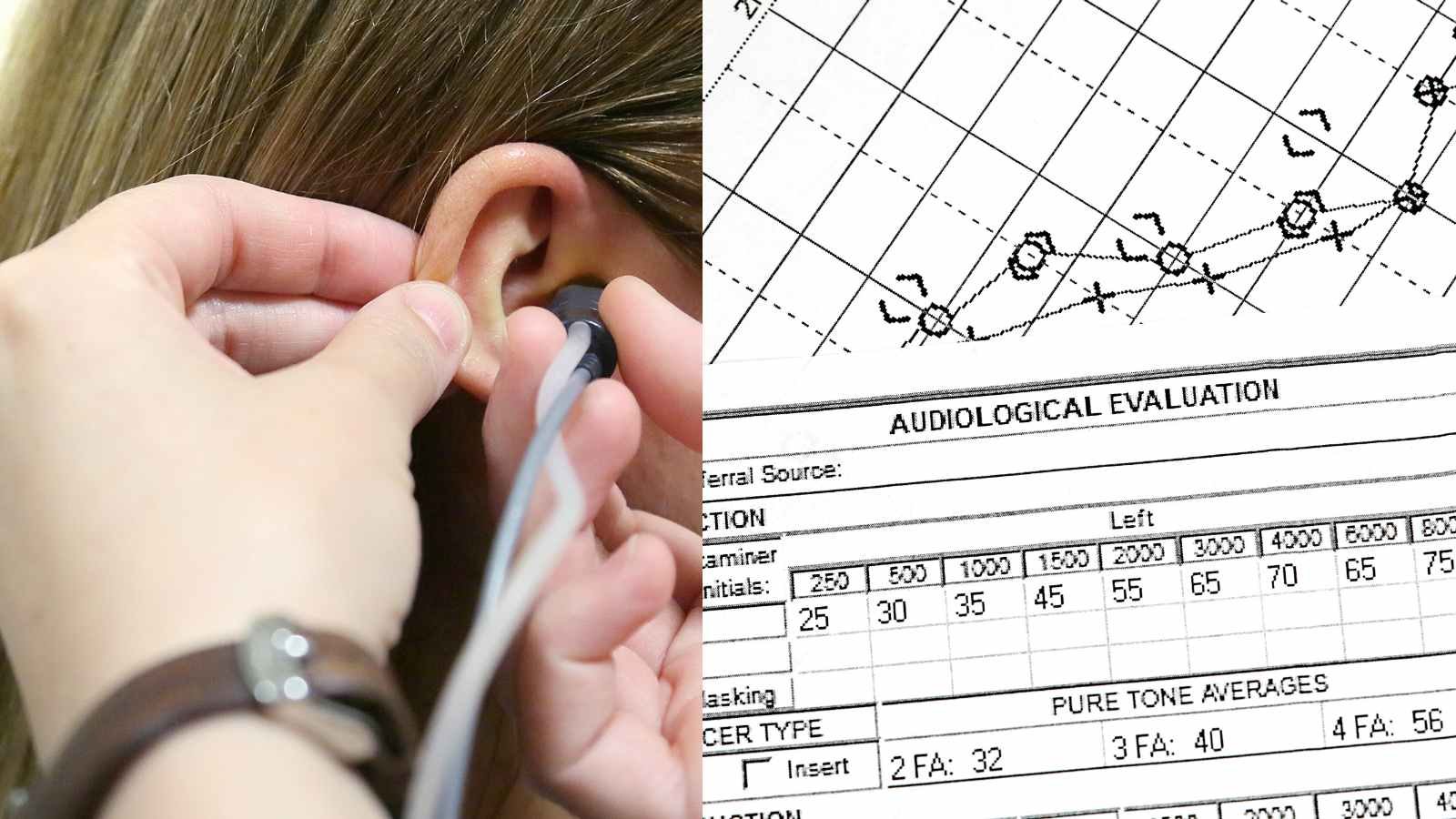Key Takeaways:
- Sudden changes in hearing have many causes and can include: viral conditions, cardiovascular events, trauma, or other causes.
- It is important to seek medical treatment immediately after a sudden hearing loss occurs, as treatment within the first few days provides the best chance of recovery.
- An ENT will do a thorough evaluation, including a comprehensive hearing test, to determine the cause of the hearing loss.
- Treatment for asymmetric or single-sided hearing loss can include: hearing aids, BAHAs, cochlear implants, or CROS hearing aids.

Ever wake up in the morning and notice your hearing is different? Think: Muffled sounds, quieter tones, and less ability to hear in noise? Well, you’re not alone.
As an audiologist, I've encountered many patients who come into the office after a sudden change in their hearing. While it can be frustrating to experience, I'm happy to see them come in quickly after the occurrence because timely diagnosis and treatment are essential. Sudden Sensorineural Hearing Loss—or, SSNHL—is a medical emergency that can occur for several reasons. In some cases, quick intervention can restore hearing, which makes it critical to understand how to recognize the signs and seek proper treatment.
How Patients Notice a Change in Hearing

Over the years, I've heard many stories about when patients noticed a change in their hearing. Often patients notice that their hearing has changed when they wake up, and the sound seems muffled in one ear. Patients may also hearing ringing in one ear in addition to sudden hearing loss. They may try to rub their fingers near the affected ear and notice that it is much quieter, or they go to put in their headphones or take a phone call and notice a difference in how they hear in one ear. When this happens, many people wonder: Why is it that a sudden change in hearing occurs overnight? One possible answer is due to changes in blood pressure or diurnal fluctuations in hormones that happen overnight, which are more likely to affect the delicate blood supply to the cochlea at that time.
What is Sudden Sensorineural Hearing Loss?

Sudden sensorineural hearing loss (SSHL) is a change to the inner ear hearing status. SSNHL is a change of 30 dB HL or greater at three adjacent frequencies within 72 hours. For example, if your hearing changes from normal to SSNHL in one ear, a normal conversation becomes barely audible. In most cases, SSHL occurs in just one ear. According to a recent study, there are about 66,000 cases of SSNHL each year in the United States. Symptoms include muffled hearing, ear fullness, poor speech understanding, difficulty localizing sounds, and tinnitus (ringing in the ears). Some also experience dizziness or vertigo (the sensation of rotary motion). While SSNHL can happen at any age, it most commonly affects adults between 40 and 50.
What Causes Sudden Sensorineural Hearing Loss?

The exact cause of SSHL is often unknown. However, a literature review of SSNHL discovered that:
- 71% was idiopathic (cause unknown)
- 12% was due to infectious diseases (e.g., Lyme disease)
- 5% was from otologic disease (e.g., vestibular schwannoma, autoimmune inner ear disease)
- 4% was due to trauma
- 3% was vascular (e.g., a cardiovascular event, high blood pressure, etc.)
- 2% neoplastic (e.g., lymphoma, metastatic thyroid cancer)
- 2% other causes (e.g., iatrogenic, neurologic, viral, etc.)
Several conditions can cause sudden changes in hearing. That being said, the cause is unknown in the majority of cases. A sudden change in hearing can also be caused by health conditions that affect the delicate blood supply to the two end arteries in the cochlea, which puts it at risk of disruption due to its lack of collateral blood flow. Additionally, inner ear inflammation is a suspected contributor to sudden changes in hearing.
Known causes of sudden changes in hearing can include ear diseases, such as Meniere's disease, vestibular schwannoma (aka, a benign growth on the hearing nerve), or an autoimmune inner ear disease.
Diagnostic Testing

The first step to treating SSHL is a comprehensive hearing test. The hearing test will assess hearing ability and speech clarity. An audiologist may also perform impedance testing to assess middle ear function and acoustic reflex testing to screen the neural pathways that connect the ear to the brain.
Depending on your symptoms, a physician may also order an MRI of the head and neck. This is helpful because the MlRI can help rule out a vestibular schwannoma.
Medical Treatment for Sudden Sensorineural Hearing Loss

If you suspect you have sudden sensorineural hearing loss, it's vital to seek medical attention immediately. In addition, diagnostic assessment is vital to identify the type of hearing loss severity of hearing loss and determine the proper treatment. For example, if you have an ear infection, it can feel like a sudden change in hearing. However, treatment for an ear infection causing conductive hearing loss will differ from sensorineural hearing loss.
Initially, an ENT may prescribe a course of corticosteroids or administer intratympanic steroids directly through the eardrum to the round window in the cochlea. Steroids are most effective within two weeks of the occurrence and preferably taken within several days of onset.
Treatment for Hearing Loss
If hearing loss persists after medical treatment, there are several options for hearing intervention. The best options will vary depending on the degree of the hearing loss. Options include:
- Hearing aid
- CROS hearing system
- BAHA
- Cochlear implant
CROS
If speech discrimination is impaired in one ear, a CROS (aka, contralateral routing of signal) helps by sending the sound to the ear that can more easily perceive it. A CROS system looks like two hearing aids. Keep in mind, a hearing aid is only worn on the better ear, with a remote microphone on the poorer ear. Therefore, this system helps most when the speaker is nearest the poorer ear, for example, in a restaurant or car.
BAHA
A bone-anchored hearing aid (i.e., BAHA) works the same way as the CROS system but is a surgical option. First, an abutment is surgically placed on the mastoid bone. It takes several weeks to heal and integrate with the surrounding bone. After it heals, the BAHA will be activated. This device works by stimulating the bones of the skull, and the better ear receives the sound.
Cochlear Implant
A cochlear implant (also referred to as a CI) is an option for permanent hearing loss and, more recently, is an option for single-sided deafness (SSD). Typically, patients try a hearing aid before pursuing cochlear implantation. A CI works differently than a CROS or BAHA, as this option will restore hearing to the inner ear through electrical stimulation.
Conclusion
If you are experiencing signs or symptoms of sudden sensorineural hearing loss—like muffled hearing, tinnitus, dizziness, or vertigo—it's essential to seek medical attention immediately to prevent permanent damage. While the cause of SSHL is often unknown, treatments available can help improve your quality of life and hear better. The key is to act quickly after you notice a sudden change in hearing.






